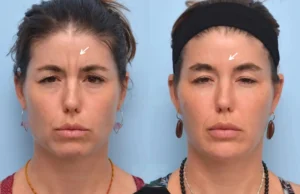
Property ownership is a topic that often raises important questions especially when disputes arise over boundaries, access rights, or inheritance. Whether you’re a potential homebuyer, a curious neighbor, or dealing with a legal matter, one of the most common questions people ask is: Who owns that property? Understanding how to find this information legally and accurately can save you from costly misunderstandings and help you make informed decisions. At Land Registry Online, we aim to simplify the process of property research, particularly when it comes to house boundaries and garden boundaries.
Why Property Ownership Information Matters
Knowing who the owner of a particular property is not only a question of curiosity it’s an essential component of a lot of processes. Let’s say you want to purchase some land or the house next door. Then ascertaining ownership will allow you to make an offer or know you’re negotiating with the correct owner. Similarly, if a boundary issue arises such as a shared fence, tree overhang, or driveway access you’ll need to know who legally owns the adjacent land to resolve the matter.
Property ownership is important too when it comes to development schemes. When you’re having an extension or putting up a fence, you need to be sure of where your property stops and your neighbor’s starts. That’s where clarification of boundaries comes in, and it‘s why the subject overlaps so much with knowing the boundaries of houses and gardens.
How Is Property Ownership Recorded in the UK?
In England and Wales, the HM Land Registry is the state authority that keeps land and property ownership records. On selling or purchasing a property, the transaction is noted and the details of the new owner.
Every registered property carries a unique title number and has attached to it a Title Register and a Title Plan.
The Title Register contains important information regarding the property, including details of ownership, any rights of way, and financial burdens such as mortgages.
The Title Plan is a charted representation of the boundaries of the property, normally using Ordnance Survey information.
These documents are the basis on which to confirm ownership, settle disputes, and know the layout of your land in relation to adjacent plots.
Methods to Find Out Who Owns That Property
- Use a Land Registry Search Service
The most direct way to find out who owns a property is by conducting a Land Registry search. Through services like Land Registry Online, you can access official title documents securely and efficiently. All you need is the property address or postcode, and within minutes, you can retrieve ownership details, boundary information, and any registered charges. - Check House and Garden Boundaries
Many ownership issues stem from unclear or disputed boundaries. A Title Plan offers a general overview, but it’s not always exact. For a more accurate boundary layout, additional resources like old conveyance deeds, physical inspections, or professional boundary surveys may be needed. Knowing who owns which part of a garden or pathway can avoid friction with neighbors and clarify maintenance responsibilities. - Use the Index Map Search
In cases where a property is unregistered or only part of a larger estate, an Index Map Search can help identify if and how the land is registered. This search provides a view of all registered titles within a specific area, which is useful for developers or buyers dealing with multiple plots. - Investigate Local Council Records
While councils don’t usually hold ownership records, they can be a resource for planning permission histories, development applications, or legal notices that may indicate a property’s owner or their agents.
Common Scenarios Where Ownership Information is Needed
- Boundary Disputes: When fences or hedges are contested, establishing ownership through a Title Plan is the first step in resolving the issue legally.
- Buying a New Property: Verifying that the seller is the legal owner before proceeding with any purchase is a fundamental due diligence step.
- Checking for Easements or Restrictions: If you suspect that a right of way or restriction affects a property, ownership documents will usually detail these encumbrances.
- Dealing with Abandoned or Empty Properties: In some cases, vacant land or unoccupied homes might attract interest from developers or neighbors. Ownership verification can help initiate lawful contact with the title holder.
Understanding the Role of Boundaries in Ownership
It’s important to note that property boundaries especially for houses and gardens are not always as straightforward as they appear. Fences may have been moved over time, or features such as hedges may not accurately represent the legal boundary. This is why relying solely on visual inspection can lead to misunderstandings.
Legal boundary lines can only be clarified through a combination of Title Plans, historical documentation, and, when necessary, professional surveys. It’s also essential to communicate openly with neighbors during this process to maintain positive relationships and avoid escalating tensions.
What If the Property Is Unregistered?
While most properties in the UK are now registered, some land parcels remain unregistered especially if they haven’t changed ownership for several decades. In such cases, ownership can still be traced using older deeds or conducting local searches. It’s a longer process but still possible through legal channels.
Steps to Take After You Find the Owner
Once you’ve identified the property owner, your next steps will depend on your purpose:
- For Purchase Inquiries: You can contact the owner directly or through their solicitor or estate agent.
- For Disputes or Clarifications: Consider sending a formal letter or seeking mediation services if discussions become difficult.
- For Legal Purposes: Consult with a property solicitor before taking any further action, especially if it involves encroachment or trespassing concerns.
The Importance of Accuracy and Legality
It’s essential to ensure that your property research is carried out legally and ethically. Never attempt to trespass, damage, or access someone’s property to determine ownership. Always use official channels, such as Land Registry Online, to obtain the correct documents and proceed within the bounds of the law.
Conclusion
Discovering actually who owns that Property is not as difficult as it would appear particularly with the digital technology we have today. Having access to original land registry papers and proper mapping, you can find out what the property boundaries are, who owns it, and any rights that go along with the land. From a neighborly dispute to wanting to invest or simply wanting to know what land is in your area, becoming educated is always the best place to start.
At Land Registry Online, we’re dedicated to assisting people, homeowners, and professionals in understanding property information with confidence.







